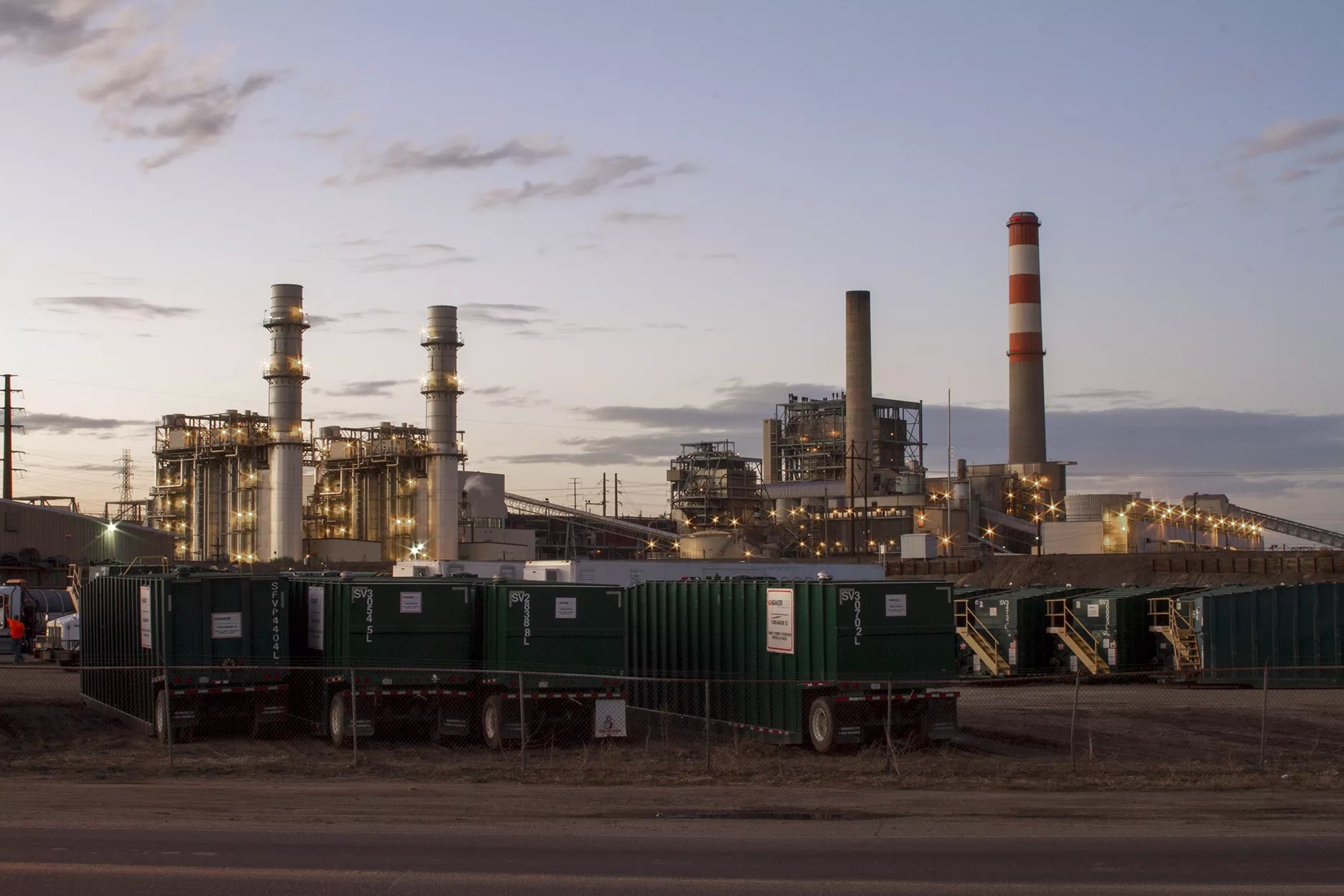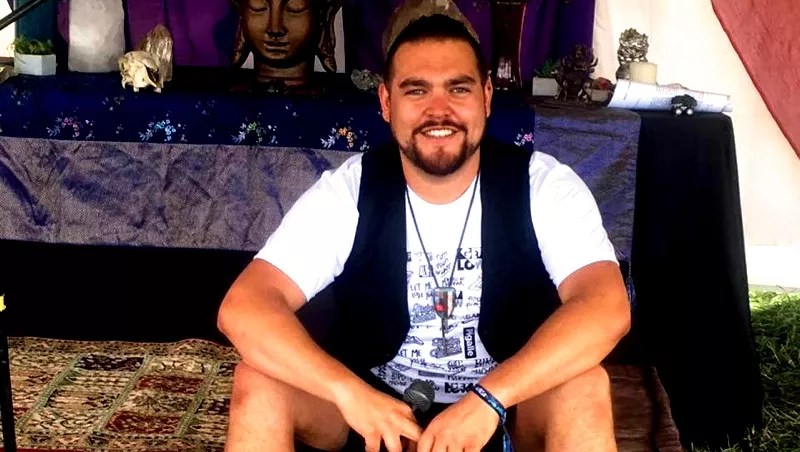
Grant Stringer

Audio By Carbonatix
The state’s Environmental Justice Action Task Force held its second meeting on February 22, electing co-chairs and deciding how to determine the content of its final report, due in November. Established as part of the Environmental Justice Act passed by the Colorado Legislature in 2021, the task force is charged with issuing recommendations regarding how the state can address environmental justice issues in disproportionately impacted communities.
Several hours were devoted to determining what percentage of the task force’s members would be required to agree to a recommendation in order for it to be included in the final report, offering a preview of more contentious conversations to come. The task force’s 25 members include nine appointed by the governor and sixteen by the legislature; two more spots are reserved for representatives of tribal governments.
Ean Thomas Tafoya, Colorado state director for GreenLatinos, led one group in pushing for a simple majority while others, such as attorney Arthur Ortegon and Tyson Johnston, a vice president at Gunnison Energy, argued for a higher level. Ortegon said that requiring the group to reach a consensus would indicate that the recommendations were taken more seriously, while Tafoya suggested that too high a threshold would eliminate some valuable ideas.
“Democracy functions that way normally,” he explained, as he pushed for a 51 percent threshold. “If the list is longer, I think that’s a good thing.” Besides, he noted, having to reach consensus would derail solutions for front-line communities, because several members of the task force come from the oil and gas industry.
Ultimately, the task force compromised: A two-thirds majority will be required for final recommendations, with a minority report on other recommendations allowed with the vote of at least six members.
“We saw a lot of votes within the industry and state government officials voting against smaller thresholds compared to community groups, or individuals from the community, who wanted a lower threshold,” says Hila Nucete, a task force member who’s the director of civic engagement for the League of Conservation Voters.
Tafoya agrees, adding that he’s concerned that the minority report will include only initiatives that community members want but industry and government reps do not. “If we call it a minority report and only the minorities write it, then it’s the same as what it’s always been,” he points out.
According to Nucete, the threshold level was a contentious issue because government officials fear bold change and prefer incremental measures. “We could say that a lot of times they don’t want any change to happen because the system is working according to how they created it,” she says. “It’s also going to be very difficult for individuals and the community to sway government officials to fall in line with what environmental justice communities need.”
Nucete points to a push for stricter regulations for air permits as an example of when it could be hard to sway government officials or people from the oil and gas industry.
And permitting is already a hot topic with the task force.

Ean Thomas Tafoya was elected co-chair of the Environmental Justice Action Task Force.
The only public comments sent before the meeting concerned air permits, specifically the permit for Xcel’s Cherokee power station. Chandra Rosenthal, who leads the Rocky Mountain office for Public Employees for Environmental Responsibility, which works with whistleblowers to expose illegal government actions and improve laws and regulations, said that the plant was last permitted in 2011, and the state didn’t require modeling to determine compliance with the Clean Air Act. Employees at the time sent emails arguing that because the plant is near a disproportionately impacted community in north Denver, modeling should be required, she told the task force, urging its members to recommend that the Colorado Department of Health and Environment reopen the permit immediately.
Before Rosenthal repeated her concerns during the public comment section of the meeting, Joel Minor, environmental justice program manager for CDPHE, addressed her written comment. “Nothing in the Environmental Justice Act gives the task force specific authority to intervene in, or provide recommendations to, the Air Pollution Control Division about a specific permit,” Minor said. “The Environmental Justice Act does contemplate the task force making recommendations, but it only talks about a single set of final recommendations in November 2022, so it doesn’t discuss making other recommendations in the interim.”
Rosenthal doesn’t think the lack of specificity precludes the task force from acting quickly, however. “The task force was created to recommend and promote strategies for incorporating environmental justice and equity into how state agencies discharge their responsibilities,” she says. “In the same breath, the legislature added another provision which allows the CDPHE to go back and reopen air permits that impact disproportionately impacted communities.”
Tafoya recommended that the task force’s Equity Analysis Subcommittee examine PEER’s request regarding Cherokee. The facility can be seen from his mother’s front yard, and hearing that employees’ calls for modeling were ignored made him sick to his stomach, he says.
During the public comment segment, other people said they were worried that the task force members representing disproportionately impacted communities were being ignored in decision-making processes.
“I’ve noticed that the appointed agency staff on this task force tend to vote in alignment with task force members with industry backgrounds, as opposed to members with experience working and living in disproportionately impacted communities,” said Jared Bynum, communities and justice advocate with Conservation Colorado. “This is clearly demonstrative of the power imbalance that inspired the community members who advocated for HB-1266 to establish the task force in the first place. … State agencies more often than not side with industrial polluters, oil and gas companies and other toxic emitters…rather than prioritizing the voices and representatives of disproportionately impacted communities.”
Tafoya noted that representatives of disproportionately impacted communities were a voting bloc of six on some questions but that there was agreement among more members on others. One of those was the election of co-chairs to lead the task force. Tafoya earned fifteen votes and Johnston came in second, with Sheila Davis, a CDPHE representative with expertise in health equity, breaking a tie between Johnston and either Renee M. Chacon or Michael Sapp, who were also nominated for co-chair.
Tafoya, who worked to pass the Environmental Justice Act and was recently named a River Network hero, has traveled across the state to hear concerns of community members; he says he hopes to lead by example.
Johnston was appointed to the task force as a representative of the non-renewable energy industry by House Minority Leader Hugh McKean, while Tafoya was appointed as a representative of an organization that carries out initiatives related to environmental justice by Speaker of the House Alec Garnett.
Johnston did not reply to a request for comment. During the meeting, he cited his experiences growing up in rural Colorado and experiencing racism as reasons why he could empathize with disproportionately impacted communities, despite working in oil and gas.
“Being able to have a member of the community and somebody fighting for so long for environmental justice being teamed up with somebody that works directly for oil and gas is going to be an interesting task,” Nucete says of the co-chairs. “Community members thought that the Environmental Justice Task Force will be led by individuals from environmental justice communities. We are going to have to really do a lot of work on developing trust in the community.”
To help with that process, Nucete is serving on the Best Practices for Community Engagement Subcommittee. “As you saw by the votes, we can be overpowered by industry and by government officials in the room, so one of my primary purposes within this committee, or this task force, is really being able to bring the voices of community members into these spaces,” she says. “Our final vote is going to be quite lengthy, and that in itself is going to be a battle with industry.”